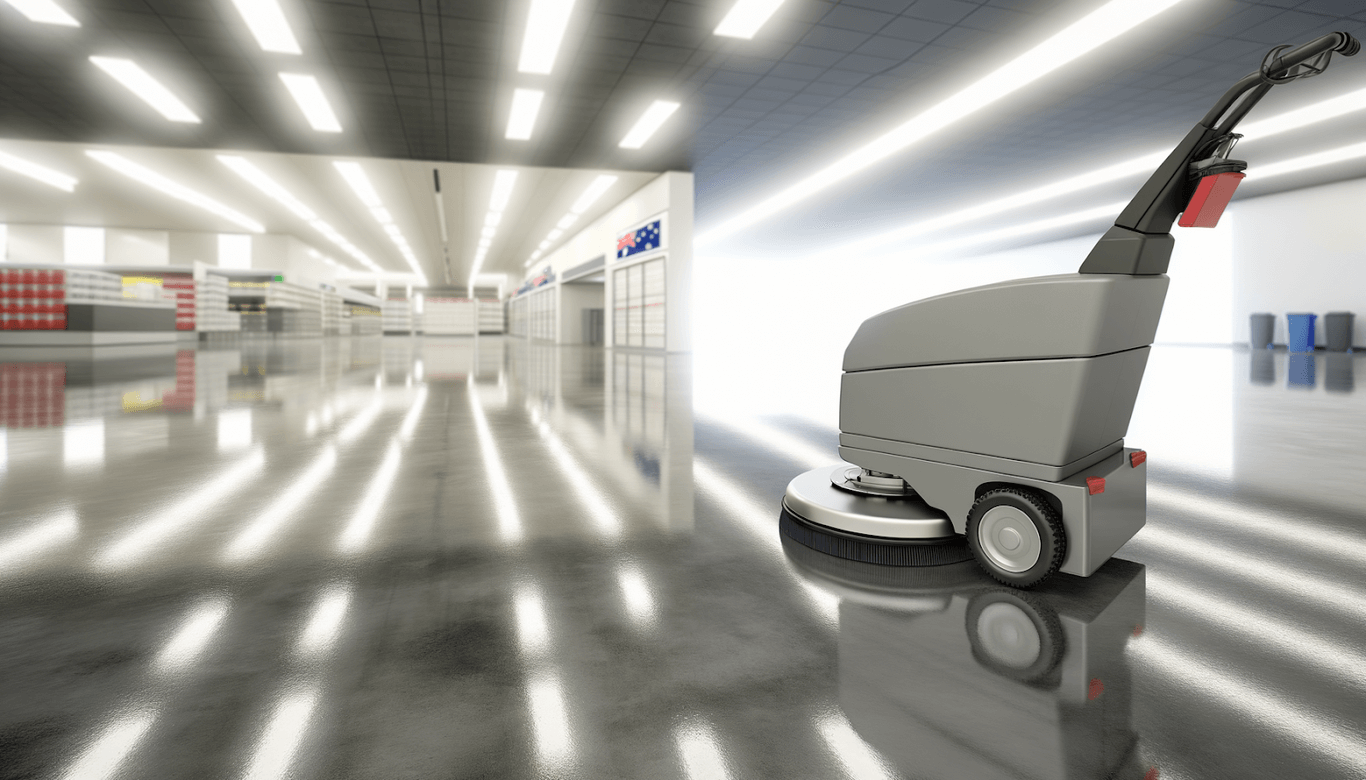
How to Use Walk-Behind Scrubbers on Different Flooring Types: Best Practices
G'day, folks! If you've landed here, chances are you're looking to make your walk-behind scrubber experience as smooth as a well-polished floor. Whether you're sprucing up a concrete pad, a stylish vinyl spread or those never-ending tiles, this guide will provide you with all the tips and tricks you need to master the art of using walk-behind scrubbers.
The Basics of Walk-Behind Floor Scrubbers
Walk-behind floor scrubbers are a brilliant bit of kit for anyone tasked with cleaning large areas efficiently. Unlike the old mop and bucket setup, these machines both scrub and dry in one go—top-notch for keeping business areas operational without the hassle of wet floors.
Benefits You Can’t Ignore
- Efficiency and Speed: These scrubbers make quick work of vast spaces, allowing operations to get back to normal in no time.
- Consistent Cleaning Results: With automated functions, there's no risk of inconsistency that often comes with manual labour.
- Cost-Effective in the Long Run: Saves on labour expenses and reduces costs on cleaning supplies.
- Enhanced Safety: Leaves floors dry to cut down the risk of accidents.
- Environmentally Friendly: Uses less water and fewer cleaning solutions—perfect for the eco-conscious cleaner.
Best Practices for Using Walk-Behind Scrubbers
Understanding Your Floor Type
Before firing up the scrubber, it’s crucial to match the machine’s settings with your floor type. Here's a quick rundown:
- Tiles: Use a gentle pad and avoid excessive scrubbing to prevent grout damage.
- Concrete: A sturdier brush can be used for these surfaces to break down tough stains.
- Vinyl: Opt for softer pads to prevent scratching and always use a suitable cleaning solution.
Pre-Use Checks
Start with a glance over your machine to ensure all parts are in excellent working condition. Look at the squeegee, brushes or pads, and make sure tanks are filled with the right cleaning solutions and have enough water.
Operational Tips
While operating your walk-behind scrubber, remember these:
- Follow the manufacturer’s guidelines religiously to guarantee optimal results.
- Engage the correct settings for different surface types to avoid unnecessary wear on the machine.
- Keep an eye on water and solution levels to ensure consistent cleaning.
Post-Use Maintenance
Don't just turn it off and call it a day once you’re done. Proper post-use care involves:
- Draining and rinsing the recovery and dirty water tanks to prevent bacterial buildup.
- Cleaning the scrub deck, and squeegee thoroughly after each use.
- Checking for any signs of wear on brushes or pads and replacing them as needed.
Choosing the Right Walk-Behind Floor Scrubber for Your Needs
Floor Type Considerations
Matching your scrubber to the floor is crucial. Here’s what to consider:
- Soft floors: Choose models with gentler pads to avoid damage.
- Hard floors: Opt for models with sturdier brushes that can tackle tougher stains.
Size and Coverage
Make sure the scrubber is the right size for your space. Bigger ain't always better, especially if you're navigating tight retail aisles. Conversely, larger areas will need a machine with more extensive coverage.
Power Source Options
Decide between a battery-powered model for disconnected areas or an electric one if you’ll always be near a power outlet. Battery models are all about flexibility but remember they require regular charging.
Features and Automation
Higher-end models may include more control features for precision cleaning and automation to simplify operation. Consider your specific needs when deciding on the complexity of the model.
Extending the Lifespan of Your Scrubber
Regular Maintenance
Keep your scrubber in prime condition with these tips:
- Store your machine in a clean, dry place to avoid rust and damage.
- Schedule regular service checks, ideally every few months, to catch and fix minor issues before they're major.
- Always use the recommended cleaning solution to maintain machine integrity and ensure effective cleaning.
Troubleshooting Common Issues
If you encounter problems, like the machine not picking up water or not powering on, it may be time to check:
- Squeegee and recovery tanks for cleanliness and wear.
- Power sources and connections for faults.
- Any signs of leaks or loose connections that need tightening or replacing.
By following these guidelines and regularly maintaining your machine, you'll enjoy a spotless, safe environment in no time. Remember, the right choice of scrubber and excellent care can mean the difference between a clean operation and a cluttered one.
Thanks for stopping by, mates, and happy scrubbing!
